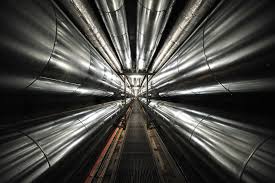
Breaking News
Catch Your Dream: Love it, Do it, Live it
 BMW to begin series production of 3rd-gen hydrogen fuel cell system
BMW to begin series production of 3rd-gen hydrogen fuel cell system
 The world you know will be nearly UNRECOGNIZABLE by 2030: AI, robots, revolts...
The world you know will be nearly UNRECOGNIZABLE by 2030: AI, robots, revolts...
 I didn't think this was real..It is! Warning
I didn't think this was real..It is! Warning
Top Tech News
 Neuroscientists just found a hidden protein switch in your brain that reverses aging and memory loss
Neuroscientists just found a hidden protein switch in your brain that reverses aging and memory loss
 NVIDIA just announced the T5000 robot brain microprocessor that can power TERMINATORS
NVIDIA just announced the T5000 robot brain microprocessor that can power TERMINATORS
 Two-story family home was 3D-printed in just 18 hours
Two-story family home was 3D-printed in just 18 hours
 This Hypersonic Space Plane Will Fly From London to N.Y.C. in an Hour
This Hypersonic Space Plane Will Fly From London to N.Y.C. in an Hour
 Magnetic Fields Reshape the Movement of Sound Waves in a Stunning Discovery
Magnetic Fields Reshape the Movement of Sound Waves in a Stunning Discovery
 There are studies that have shown that there is a peptide that can completely regenerate nerves
There are studies that have shown that there is a peptide that can completely regenerate nerves
 Swedish startup unveils Starlink alternative - that Musk can't switch off
Swedish startup unveils Starlink alternative - that Musk can't switch off
 Video Games At 30,000 Feet? Starlink's Airline Rollout Is Making It Reality
Video Games At 30,000 Feet? Starlink's Airline Rollout Is Making It Reality
 Grok 4 Vending Machine Win, Stealth Grok 4 coding Leading to Possible AGI with Grok 5
Grok 4 Vending Machine Win, Stealth Grok 4 coding Leading to Possible AGI with Grok 5
China Mass Production of Nuclear Thermal Power Could Reach 1 Cent per KWH

This is close to the one-cent target of the Anthropocene Institute. China is planning to build a lot of nuclear regular third-generation nuclear reactors and drive costs down by 40%. Learning to build Nth reactors cheaper could drive the costs of deep pool reactors to 1 cent per kilowatt-hour. Mass production and process improvements could then bring this solution to the one-cent per kwh target.
The cost projection is for a kilowatt-hour of thermal power but this heat can displace a large usage of coal. There is also a projection that China could mass-produce regular nuclear reactors for electrical power. The projection is that they could reduce costs by 40% from today's costs. This would get nuclear electric costs in 2030 to potentially less than 3 cents per kwh for electricity.
In 2014, the levelized cost of electricity (LCOE) in China was 4 cents per kwh for hydroelectric and other renewable energy (RE) power had costs ranging from 5 to 11 cents per kwh.
The nuclear district heaters will already be near the cost of traditional coal-fired boilers in China and around 40 percent of the cost to produce the same amount using a gas-fired boiler. China is not importing enough natural gas from Russia and other sources. A trade deal with the US would likely involve a lot of liquified natural gas which is more expensive.

 HERE COMES THE MOTHERSHIP
HERE COMES THE MOTHERSHIP

